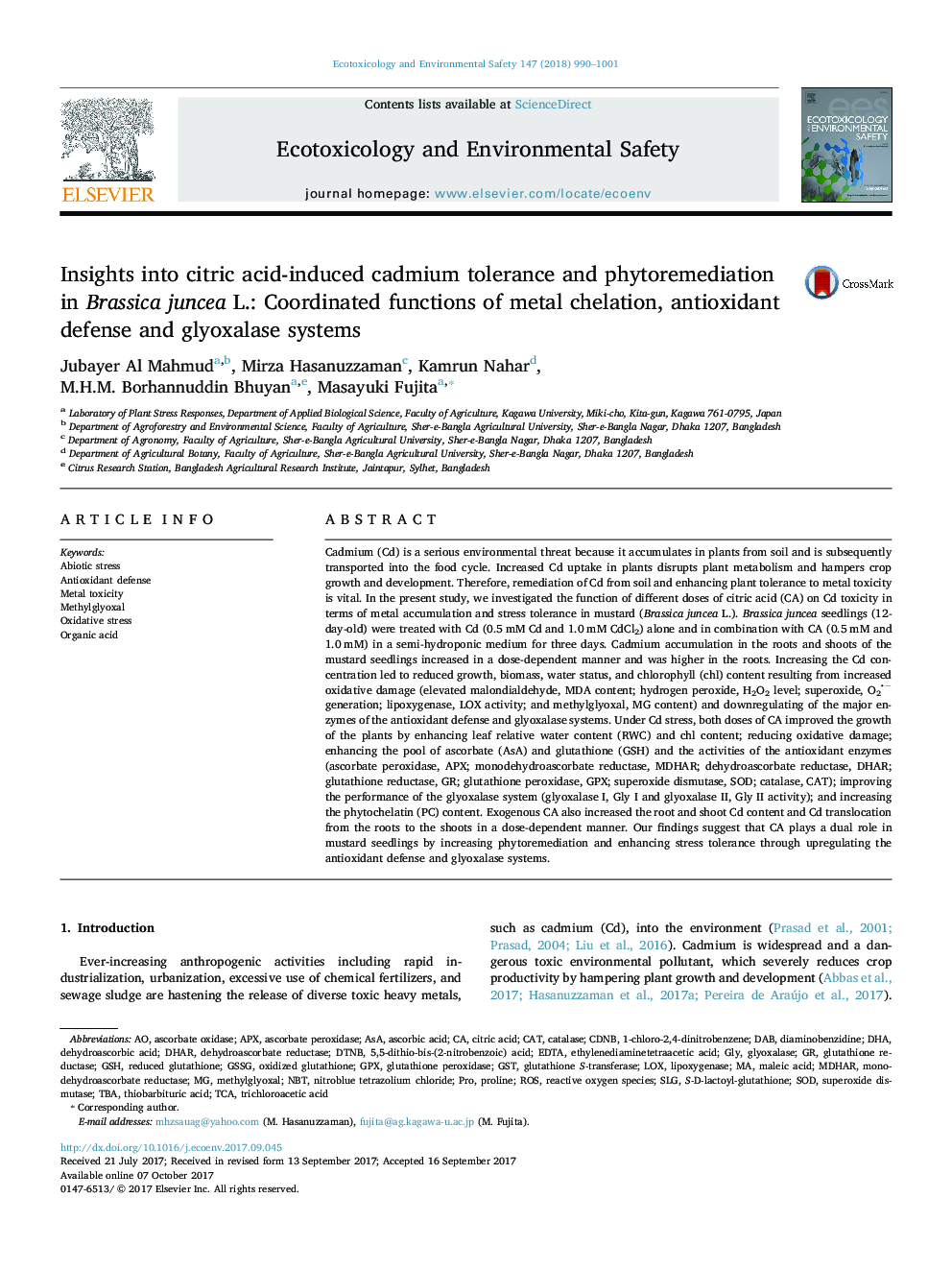| کد مقاله | کد نشریه | سال انتشار | مقاله انگلیسی | نسخه تمام متن |
|---|---|---|---|---|
| 5747846 | 1618917 | 2018 | 12 صفحه PDF | دانلود رایگان |

- Cadmium (Cd) toxicity decreased plant growth and biomass through oxidative stress.
- Citric acid reduced Cd-induced oxidative stress through activating antioxidants.
- Citric acid also increased phytoremediation capacity of Brassica juncea L.
- Citric acid functioned dose dependently to increase tolerance or phytoremediation.
Cadmium (Cd) is a serious environmental threat because it accumulates in plants from soil and is subsequently transported into the food cycle. Increased Cd uptake in plants disrupts plant metabolism and hampers crop growth and development. Therefore, remediation of Cd from soil and enhancing plant tolerance to metal toxicity is vital. In the present study, we investigated the function of different doses of citric acid (CA) on Cd toxicity in terms of metal accumulation and stress tolerance in mustard (Brassica juncea L.). Brassica juncea seedlings (12-day-old) were treated with Cd (0.5Â mMÂ Cd and 1.0Â mM CdCl2) alone and in combination with CA (0.5Â mM and 1.0Â mM) in a semi-hydroponic medium for three days. Cadmium accumulation in the roots and shoots of the mustard seedlings increased in a dose-dependent manner and was higher in the roots. Increasing the Cd concentration led to reduced growth, biomass, water status, and chlorophyll (chl) content resulting from increased oxidative damage (elevated malondialdehyde, MDA content; hydrogen peroxide, H2O2 level; superoxide, O2
- â generation; lipoxygenase, LOX activity; and methylglyoxal, MG content) and downregulating of the major enzymes of the antioxidant defense and glyoxalase systems. Under Cd stress, both doses of CA improved the growth of the plants by enhancing leaf relative water content (RWC) and chl content; reducing oxidative damage; enhancing the pool of ascorbate (AsA) and glutathione (GSH) and the activities of the antioxidant enzymes (ascorbate peroxidase, APX; monodehydroascorbate reductase, MDHAR; dehydroascorbate reductase, DHAR; glutathione reductase, GR; glutathione peroxidase, GPX; superoxide dismutase, SOD; catalase, CAT); improving the performance of the glyoxalase system (glyoxalase I, Gly I and glyoxalase II, Gly II activity); and increasing the phytochelatin (PC) content. Exogenous CA also increased the root and shoot Cd content and Cd translocation from the roots to the shoots in a dose-dependent manner. Our findings suggest that CA plays a dual role in mustard seedlings by increasing phytoremediation and enhancing stress tolerance through upregulating the antioxidant defense and glyoxalase systems.
Journal: Ecotoxicology and Environmental Safety - Volume 147, January 2018, Pages 990-1001